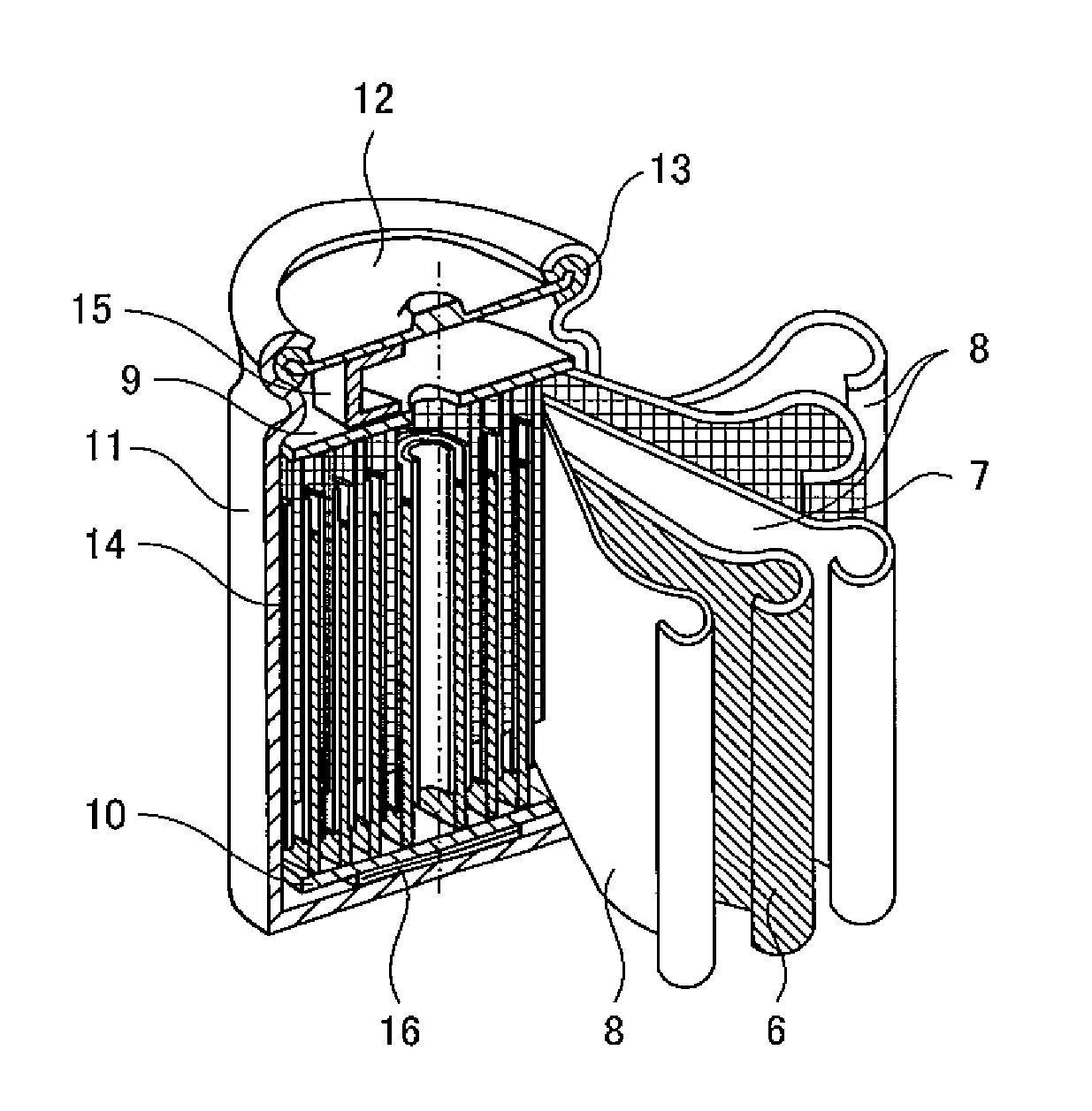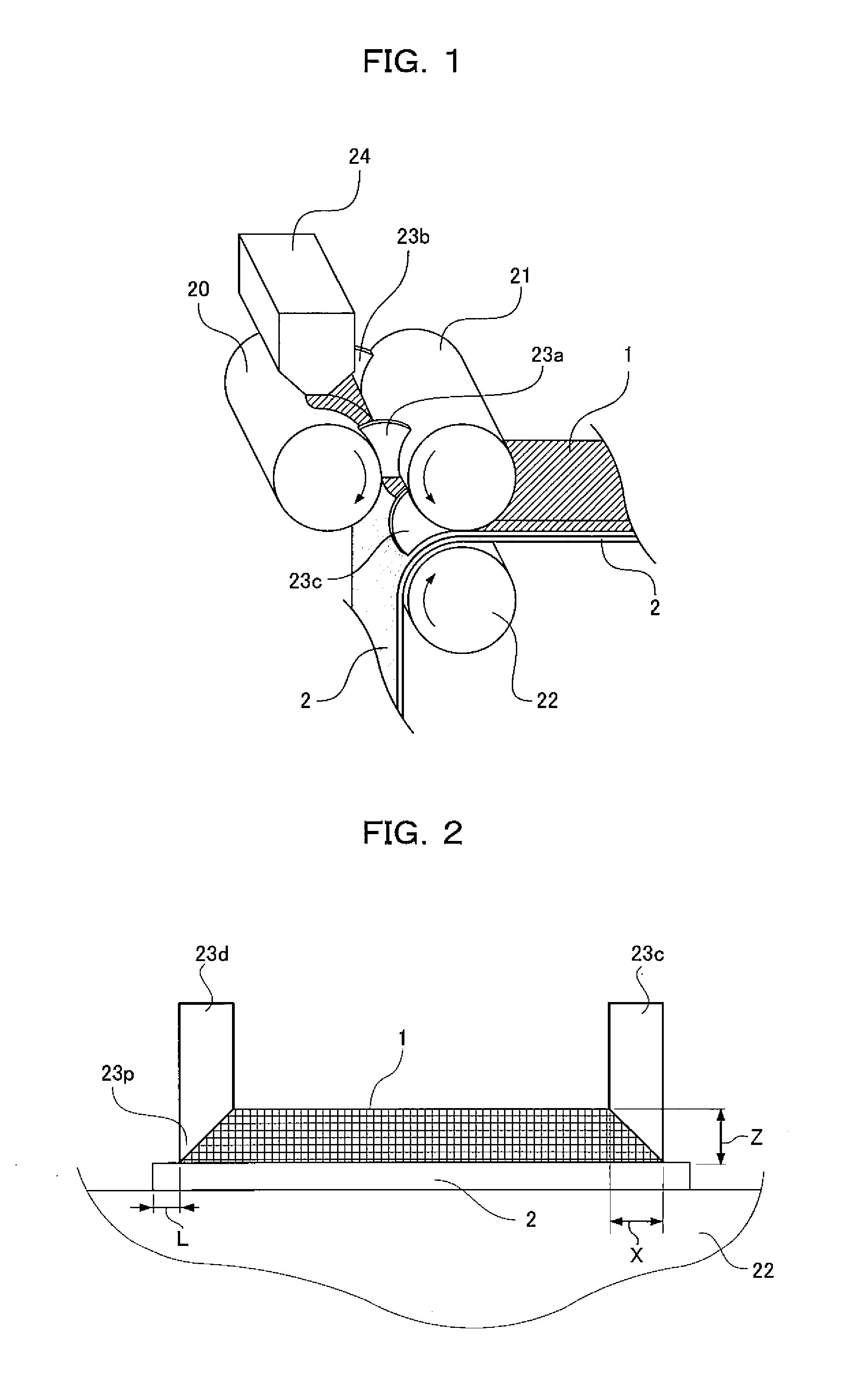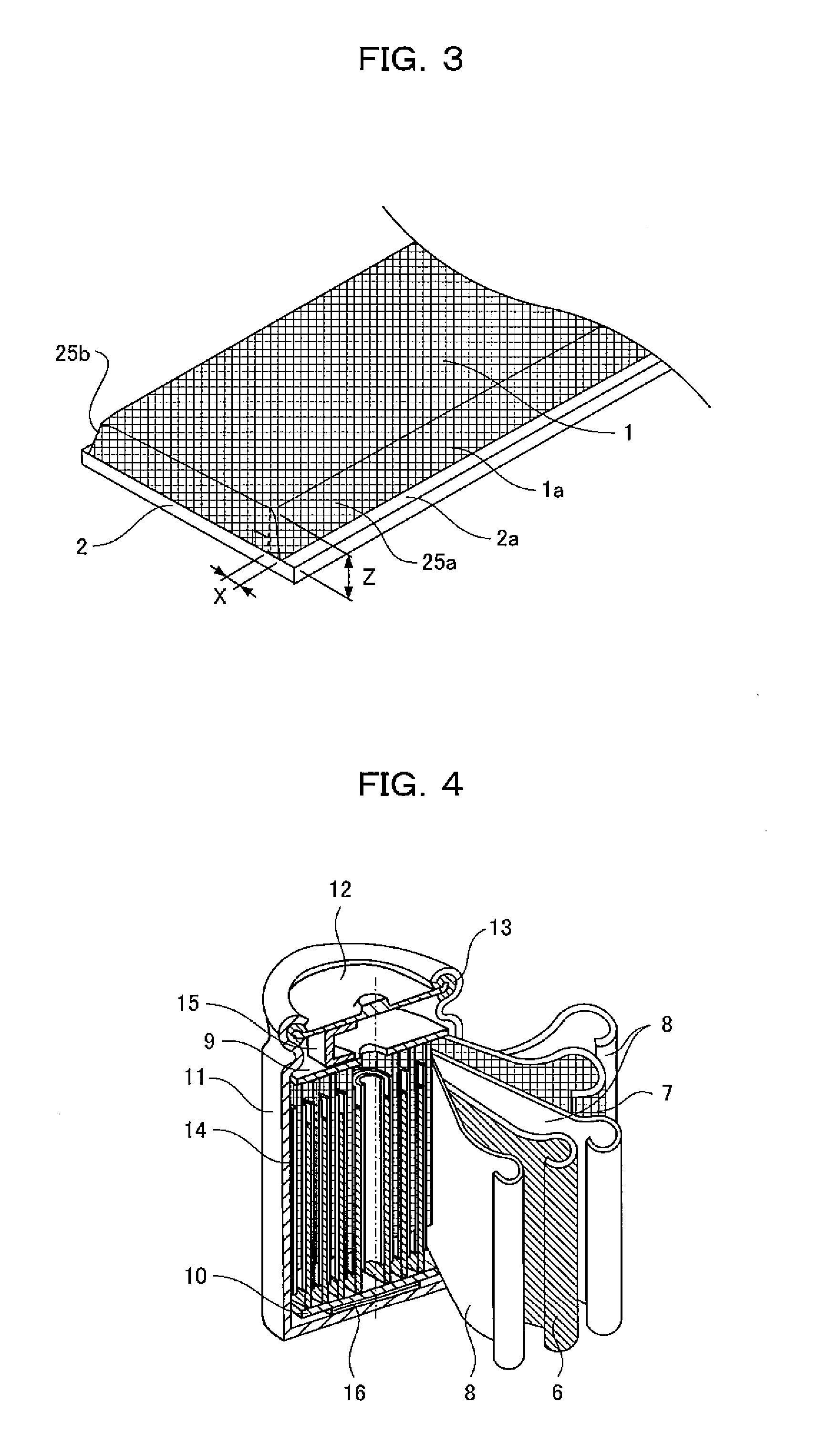Battery, method of manufacturing the same and non-aqueous secondary battery using the same
a technology of secondary batteries and batteries, applied in the field of batteries, can solve problems such as non-uniform thickness, and achieve the effect of uniform thickness and high capacity
- Summary
- Abstract
- Description
- Claims
- Application Information
AI Technical Summary
Benefits of technology
Problems solved by technology
Method used
Image
Examples
embodiment 1
[0051]FIGS. 1 to 6 show Embodiment 1 of the present invention.
[0052]FIG. 4 shows a nonaqueous secondary battery using a nonaqueous secondary battery electrode plate according to the present invention. The nonaqueous secondary battery is assembled by a procedure described below.
[0053]First, an electrode group 14 is made by winding in spiral form a positive electrode plate 6 having a composite lithium oxide as an active material and a negative electrode plate 7 having as an active material a material capable of retaining lithium, with a separator 8 interposed between the positive electrode plate 6 and the negative electrode plate 7.
[0054]Next, the electrode group 14 is housed in a battery case 11 in the form of a cylindrical tube closed at its bottom. Thus, a negative electrode current collector plate 10 connected to the lower portion of the electrode group 14 is connected to the bottom portion of the battery case 11 by a negative electrode lead 16.
[0055]Next, a positive electrode cur...
example 1
[0082]2 cc (10 g) of lithium cobalt oxide as a positive electrode active material, 0.9 cc (2 g) of acetylene black as an electroconductive material and 25 cc (25 g) of a binder solution prepared by diluting a PVdF powder with N-methyl pyrrolidone to 8% were first mixed and agitated for 30 minutes at a rate of 3000 rpm with a disperser. 18 cc (90 g) of lithium cobalt oxide was thereafter added and the mixture was dispersed and kneaded for 30 minutes with a planetary mixer until its viscosity became 40 kPa·s. A positive electrode composite coating material was thus obtained.
[0083]In this case, the total amount of the active material was the sum of 2 cc of lithium cobalt oxide and 18 cc of lithium cobalt oxide, i.e., 20 cc; the amount of the binder was 25 cc×0.08, i.e., 2 cc; and the amount of the electroconductive material was 0.9 cc. Finally, a favorable result was obtained when the proportion by volume of the binder was “10” or less to “100” by volume of the active material and when...
embodiment 2
[0093]FIGS. 8 and 9 show Embodiment 2 of the present invention.
[0094]In Embodiment 1, a battery is formed by winding the positive electrode plate 6 and the negative electrode plate 7 in spiral form with the separator 8 interposed therebetween and housing them in the battery case 11. However, the electrode plate made in Embodiment 1 as the positive electrode plate 6 or the negative electrode plate 7 can also be used in a battery in which, as shown in FIG. 8, a positive electrode plate 6 having a composite lithium oxide as an active material and a negative electrode plate 7 having as an active material a material capable of retaining lithium are stacked one on top of another with a separator 8 interposed therebetween, and an opening of a laminate container 18 aluminum foil-laminated with an insulating resin is sealed by ultrasonic welding while one end of a positive electrode lead 15 and one end of a negative electrode lead 16 are led to the outside, the positive electrode lead 15 hav...
PUM
| Property | Measurement | Unit |
|---|---|---|
| thickness | aaaaa | aaaaa |
| thickness | aaaaa | aaaaa |
| viscosity | aaaaa | aaaaa |
Abstract
Description
Claims
Application Information
 Login to View More
Login to View More - R&D
- Intellectual Property
- Life Sciences
- Materials
- Tech Scout
- Unparalleled Data Quality
- Higher Quality Content
- 60% Fewer Hallucinations
Browse by: Latest US Patents, China's latest patents, Technical Efficacy Thesaurus, Application Domain, Technology Topic, Popular Technical Reports.
© 2025 PatSnap. All rights reserved.Legal|Privacy policy|Modern Slavery Act Transparency Statement|Sitemap|About US| Contact US: help@patsnap.com



